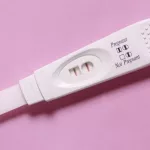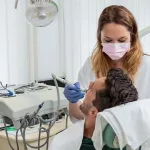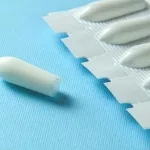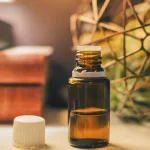Ever wonder if your insurance will actually pay for that life‑saving nasal spray you keep in your kitchen drawer? The short answer is: most plans do, but you have to know how to ask. In the next few minutes we’ll walk through what “naloxone coverage” really looks like, who can tap into it, and how to make sure the price tag never gets in the way of saving a life.
Quick Answers
What is naloxone coverage? It’s the part of your health plan that reimburses the cost of naloxone—whether you pick up a brand‑name nasal spray or a generic injectable—so you pay little or nothing out of pocket.
Can I get it for free? Absolutely, if your plan treats the medication as a covered drug. Many Medicaid programs, most private plans that include the Essential Health Benefits (EHB), and a growing number of employers will foot the bill. If you’re not sure, a quick call to the pharmacy or your insurer can clear things up.
Why It Matters
Every year more than 80,000 Americans die from an opioid overdose. Naloxone is the only medication that can reverse those deaths in minutes. When insurance steps up, it removes a massive financial barrier for families, friends, and anyone who might be the first responder on a couch or in a car.
Take the story of Blue Cross Blue Shield of Massachusetts. In August 2023 they announced they would cover over‑the‑counter (OTC) naloxone. According to Stat News, the move sparked an immediate uptick in fills, proving that when price stops being a hurdle, people act.
Washington State follows a similar path. Medicaid already lists OTC naloxone as a covered drug, and several private carriers have updated their formularies to match. The ripple effect? More kits on shelves, more hands ready to help, and—most importantly—fewer lives lost.
Who Is Covered
Understanding eligibility is half the battle. Here’s the quick breakdown:
- Medicaid beneficiaries: All 50 states allow Medicaid to cover OTC drugs if the state’s plan includes them. Most states—including Washington—have already added naloxone to that list.
- Private‑sector plans: Under the Affordable Care Act, any plan that offers the Essential Health Benefits must cover naloxone as an “opioid overdose reversal” drug, even when it’s sold without a prescription.
- Employer‑sponsored and Marketplace plans: These usually inherit the EHB requirement, but you still need to verify that the pharmacy can process a “pharmacy‑directed OTC” claim.
Still unsure where you stand? Grab a piece of paper and run through this tiny checklist (feel free to print it out):
| ✅ | Item | How to Verify |
|---|---|---|
| 1 | Is your plan EHB‑compliant? | Call member services or check your online portal. |
| 2 | Does your pharmacy accept “covered OTC” claims? | Ask the pharmacist to submit it as a pharmacy‑directed claim. |
| 3 | Do you qualify for a free or low‑cost kit? | Look for state‑run naloxone‑finder maps or local health department programs. |
Getting Covered
Now that you know you’re likely eligible, let’s get that kit into your hands.
Step 1 – Confirm Coverage Before You Buy
Dial your insurer’s pharmacy benefits line. Say, “I want to know if my plan covers OTC naloxone and how to claim it.” Most reps will walk you through the exact billing code to give the pharmacist.
Step 2 – Use a Standing Order or Co‑Prescription
Many states, Washington included, allow pharmacists to dispense naloxone under a standing order—a doctor‑signed blanket prescription that applies to anyone who asks. This means you can walk into a pharmacy, show your ID, and walk out with a covered kit.
Step 3 – Pay $0‑$10 Out‑of‑Pocket
If your insurance covers it, you’ll often see a $0 copay. Some plans ask for a nominal amount (think the cost of a pack of gum). For those with high‑deductible plans, you can still use an FSA or HSA if the pharmacy processes the claim as a “medically necessary OTC.”
Real‑World Example
Maria, a mother of two in Seattle, had never thought she’d need naloxone—until her teenage son experimented with fentanyl at a party. Thanks to Washington Medicaid’s OTC coverage, Maria walked into a local pharmacy, presented her Medicaid card, and left with a two‑dose kit for free. “I felt like a superhero,” she told me, “because I knew I could actually help my son if things went south.”
Common Barriers
Even with coverage, a few roadblocks still pop up. Let’s tackle them together.
Quantity Limits
Some state policies cap how many doses you can obtain in a single claim—often two or three doses per prescription. This is meant to prevent hoarding but can feel frustrating if you want extra kits for family members. For the nitty‑gritty on state‑by‑state limits, check out our guide on naloxone quantity limits.
Behind‑the‑Counter Confusion
“OTC” doesn’t always mean “on the shelf.” In many pharmacies the product sits behind the counter, and you have to ask the pharmacist to retrieve it. That’s where a quick “Is this covered under my plan?” question saves you from an awkward pause.
High‑Deductible Plans
If your deductible hasn’t been met, you might see a bill for the kit even though it’s technically covered. In that case, ask the pharmacist to bill it to your FSA/HSA or see if a local community organization can provide a free kit. Many cities run “NaloxBoxes” in public places—just type “naloxone finder” into Google to locate the nearest spot.
Restrictions and Stigma
Some insurers still list naloxone under “restricted” benefit categories, making it harder to get approval. That’s why it’s worth knowing your rights. A recent article on naloxone restrictions explains how to appeal a denied claim and what language to use when you speak with a benefits coordinator.
Policy Landscape
The bigger picture shapes the day‑to‑day reality of getting naloxone.
FDA OTC Approval (2023)
When the FDA cleared Narcan for over‑the‑counter sale, it opened the door for pharmacies to stock the product without a prescription. According to the FDA, the move was meant to “dramatically increase access.” But remember: approval alone doesn’t guarantee insurance reimbursement.
State Legislation
Washington recently passed HB 2503, which mandates that any private health insurer offering the EHB must cover OTC naloxone without additional cost‑sharing. Similar bills are surfacing in other states, signaling a national trend toward universal coverage.
Advocates’ Wishes
Maya Doe‑Simkins of Remedy Alliance says insurers should treat OTC naloxone like aspirin—reimbursable whether you pick it up at a pharmacy or a grocery store. “When coverage is uniform, the conversation shifts from cost to saving lives,” she told Stat News.
Future Steps
Experts suggest three concrete actions:
- Standardize “pharmacy‑directed OTC” billing codes across all plans.
- Remove quantity caps for individuals with documented opioid use disorder.
- Fund statewide “free‑kit” programs that partner with community organizations.
If you’re a policy nerd (or just someone who wants the system to work better), keep an eye on state legislature calendars and lend your voice to local advocacy groups.
Tools & Resources
Here are a few handy things you can use right now:
- Naloxone Finder Map – Washington State Dept. of Health’s interactive tool shows pharmacies, clinics, and free‑kit sites near you.
- Free‑Kit Directories – Many counties post PDFs of locations offering no‑cost naloxone; a quick Google search of “free naloxone near me” usually lands you on a local health department page.
- How‑to‑Use Video – The American Medical Association’s short tutorial walks you through a nasal spray in under a minute. (AMA tutorial)
If you need more background on the science, check out our deep dive on opioid overdose reversal. Understanding why naloxone works makes it easier to talk about it with friends and family.
Final Takeaway
Naloxone coverage isn’t a mystery reserved for health‑policy experts. It’s a practical tool you can claim today, often at no cost, that could mean the difference between life and death for someone you love—or even for yourself. Verify your plan, use the standing order at your local pharmacy, and keep a kit handy—just like you’d keep a spare flashlight.
Feel empowered? Great! Share this page with anyone you think might need a kit, download the quick checklist above, and if you have questions about your specific plan, pick up the phone and ask. Together we can turn “maybe” into “I’ve got it covered.”


















Leave a Reply
You must be logged in to post a comment.